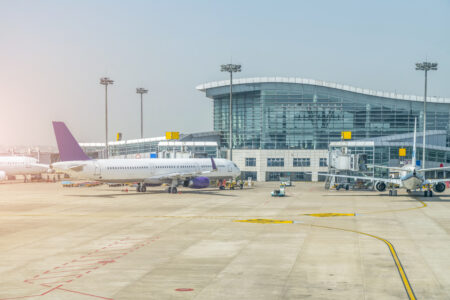Driving on highways can be an exhilarating experience, offering the promise of smooth, open roads and scenic views stretching for miles. However, amidst this allure, you must note the importance of exercising caution. You might not realize it, but every time you embark on a highway journey, you’re entering an environment fraught with potential hazards and risks.
While you may feel confident behind the wheel, you must recognize that accidents can happen in the blink of an eye. That’s why, as a responsible driver, it’s incumbent upon you to prioritize caution above all else. This article will explore a few compelling reasons why adopting a cautious approach while driving on highways is not just advisable but imperative.
Recognizing the Risks of High Speeds
Research has revealed that the speed limit on highways is directly proportional to the speed on connecting local roads in the region. This means that higher highway speeds can directly lead to higher speeds on connecting roads. As a result, pedestrian fatality rates have increased on adjacent roads to highways.
The findings indicate the urgent need to limit your speed while navigating the national highways. Driving at high speeds also reduces your field of vision, making it harder to detect potential hazards. Additionally, higher speeds require longer stopping distances, reducing your ability to brake in time to avoid accidents.
Managing the Challenge of a High Number of Trucks
Effectively managing the challenge posed by a high number of trucks on highways is essential. Large trucks have longer braking distances, making it crucial to maintain a safe following distance. They also have larger blind spots, requiring you to exercise caution when passing or merging. Furthermore, trucks can create turbulence, causing smaller vehicles to sway or lose control.
Moreover, being aware of the challenges posed by a high volume of trucks can help you plan your journey more effectively. Consider avoiding peak trucking hours or opting for alternate routes to minimize interactions with heavy traffic. Additionally, maintaining a calm and patient demeanor when sharing the road with trucks can contribute to a safer driving experience for everyone.
Despite these challenges, a large number of Americans hold positive views on truck drivers, as revealed in a new survey by CloudTrucks. Approximately 80% of Americans believe that truck drivers are essential parts of the economy. Plus, about 43% express sympathy for these drivers who often encounter unsafe behaviors from other motorists.
However, the converse is also true. Recently, many truck drivers have been involved in severe accidents, primarily due to their own mistakes. These accidents are more prevalent in certain states like Missouri, where the roads are in precarious conditions. According to TorHoerman Law, there were 89 severe trucking accidents in the state over the past year. A similar trend is evident in St. Louis, a significant urban city in Missouri.
In a recent incident, an individual lost their life in a solo vehicle accident in north St. Louis. The St. Louis Metropolitan Police Department reported that the incident occurred in the 6500 block of Hall Street. A Chevrolet Silverado traveling north veered off the road, crossed to the southbound lanes, hit a fence, and caught fire.
Accidents of this nature can result in significant financial and emotional burdens, leaving victims susceptible to enduring severe and lasting injuries. Trucking mishaps are even worse because of the severity of damage and injuries. A viable strategy to mitigate the financial impact is by pursuing a personal injury lawsuit, which can facilitate the rightful compensation for your losses.
Engaging the services of a Missouri or St. Louis truck accident lawyer can aid in initiating this crucial legal process. These legal professionals possess comprehensive knowledge of state regulations, streamlining the path to achieving the desired outcome within a shorter time frame.
Anticipating Sudden Traffic Changes
Remaining alert to anticipate sudden traffic changes is crucial for safe highway driving. Vigilance allows you to react promptly to unexpected events such as lane closures or sudden slowdowns. By scanning the road ahead and monitoring traffic patterns, you can prepare for potential hazards and adjust your speed accordingly. Anticipating sudden traffic changes enables you to navigate through congested areas and construction zones safely.
Frequent scanning of your surroundings helps you stay informed about changing road conditions and potential obstacles. Recognizing early warning signs such as brake lights or merging vehicles allows you to preemptively adjust your position and speed.
Practicing defensive driving techniques, such as signaling intentions and yielding when necessary, enhances your ability to anticipate and respond to sudden traffic changes. Anticipating sudden traffic changes is a fundamental aspect of exercising caution while driving on highways.
Prioritizing Vigilance Amidst Distractions
Studies have found that distracted behavior while driving is a common trend among young drivers. For instance, a recent study published in ScienceDirect revealed that 65% of drivers engage in at least one of 18 non-driving tasks.
Moreover, about 50% of them engage in device-based tasks in the past month. Additionally, the study found that males, parents of children under 18, and gig economy drivers are more likely to engage in smartphone distractions.
Maintaining vigilance amidst distractions is paramount for safe highway driving. Remaining alert allows you to anticipate potential hazards and react promptly. Prioritizing vigilance ensures that you can effectively navigate through challenging driving conditions.
Avoiding distractions enables you to maintain control of your vehicle and respond swiftly to changing circumstances. By staying focused on the road ahead, you can identify and mitigate potential dangers before they escalate. Vigilance is particularly crucial on highways, where high speeds and heavy traffic demand heightened attention.
By setting a positive example, you encourage other drivers to prioritize attentiveness behind the wheel. Through collective efforts to prioritize vigilance amidst distractions, we can work towards reducing accidents and creating safer highways for everyone.
Navigating through Construction Zones Safely
Safely navigating through construction zones is imperative for highway drivers. Remaining attentive allows you to observe warning signs and adjust your speed accordingly. Staying in designated lanes and avoiding sudden lane changes minimizes the risk of accidents.
Construction zones often feature narrowed lanes and uneven road surfaces, requiring extra caution from drivers. Staying patient and refraining from aggressive driving behaviors promotes a smoother flow of traffic through construction areas.
Awareness of construction zone regulations and potential hazards enables drivers to navigate through these areas safely. It is a vital aspect of exercising caution while driving on highways, ensuring a safer journey for all road users.
Adapting to Variable Weather Conditions
As per a study by SAE International, adverse weather conditions like heavy snow, rain, and thick fog are increasingly prevalent worldwide. Such adverse conditions contribute significantly to numerous road traffic accidents, resulting in more severe damage compared to accidents in clear weather.
Adapting to these variable weather conditions is essential for safe highway driving. Driving in poor weather requires adjusting your speed and following distance to maintain control of your vehicle. Reduced visibility in rain or fog necessitates the use of headlights and caution when changing lanes or passing. Furthermore, icy or snowy road surfaces demand gentle braking and steering to prevent skidding and loss of control.
Awareness of changing weather forecasts and road conditions enables proactive adjustments to your driving behavior. Adapting to these challenges demonstrates a commitment to responsible driving and enhances overall highway safety.
In conclusion, exercising caution while driving on highways is essential for ensuring your safety and the safety of others on the road. By recognizing the risks outlined, you can navigate highways safely. These precautions not only reduce the likelihood of accidents but also contribute to a smoother and more pleasant driving experience for everyone







